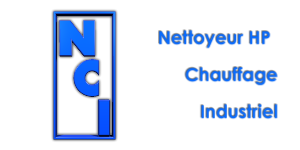The Ultimate Guide to Verification: Ensuring Accuracy in Today’s Digital World
Understanding the Basics of Verification
Verification is a critical process that ensures accuracy, security, and trust across industries. From confirming identities to validating documents, it forms the backbone of reliable systems. Whether it’s Identity Verification for user access or Document Verification for legal compliance, the principles remain consistent: cross-checking data against trusted sources. As technology evolves, Digital Verification methods have become more sophisticated, integrating advanced algorithms and real-time checks.
Why Verification Matters in Modern Society
In an era where digital interactions dominate, Authentication Processes are essential to prevent fraud, protect privacy, and maintain operational integrity. Businesses rely on robust Verification protocols to safeguard sensitive information, while individuals depend on them for secure transactions. Without effective Verification, risks like identity theft, financial loss, and data breaches escalate dramatically.
Common Methods of Verification
- Two-factor authentication enhances Identity Verification by requiring multiple confirmation steps.
- Biometric scans, such as fingerprint or facial recognition, streamline Digital Verification processes.
- Document checks, including ID cards and passports, are standard in Document Verification procedures.
Verification in Financial Services
Financial institutions prioritize Authentication Processes to detect fraudulent activities. Verification ensures that users are who they claim to be, reducing the risk of unauthorized access. For instance, banks use Identity Verification to validate account holders before approving transactions. This process also extends to Digital Verification of payment methods, ensuring compliance with regulatory standards.
Healthcare and Identity Verification
In healthcare, accurate Identity Verification is vital for patient safety and record management. Hospitals use Verification systems to confirm patient identities before administering treatments or prescriptions. Additionally, Document Verification ensures that medical professionals hold valid licenses. A notable example is the integration of Digital Verification tools, which allow seamless access to electronic health records while maintaining strict security protocols. Learn more about innovative approaches at greenleafsupplements.com/software-casino/playngo.
Government and Document Verification
Governments employ rigorous Document Verification to issue passports, driver’s licenses, and other official credentials. These processes often involve cross-referencing data with national databases to prevent forgery. Verification also plays a role in voting systems, ensuring only eligible citizens participate. Advanced Digital Verification technologies now enable remote identity checks, streamlining bureaucratic tasks without compromising security.
Challenges in the Verification Process
Despite its importance, Verification faces challenges like data breaches, outdated systems, and human error. Cybercriminals exploit weaknesses in Authentication Processes to bypass security measures. Moreover, Identity Verification can be hindered by inconsistent data formats across platforms. Addressing these issues requires continuous innovation and collaboration between sectors.
Technological Advancements in Verification
- Blockchain technology offers immutable records for Document Verification, reducing tampering risks.
- Machine learning models enhance Digital Verification by detecting anomalies in real time.
- Cloud-based solutions centralize Verification data, improving accessibility and scalability.
The Role of AI in Verification Systems
Artificial intelligence revolutionizes Authentication Processes by automating complex checks. AI-powered systems analyze patterns in Identity Verification data, flagging suspicious activity. For example, chatbots can verify user identities during customer service interactions, reducing manual workload. These advancements make Verification faster, more accurate, and less prone to errors.
Blockchain and Secure Verification
Blockchain provides a decentralized framework for Document Verification, ensuring transparency and traceability. Each transaction is recorded in a tamper-proof ledger, making it ideal for Identity Verification in high-stakes environments. Its application in Digital Verification reduces reliance on centralized authorities, empowering users with greater control over their data.
Best Practices for Effective Verification
- Implement multi-layered Authentication Processes to minimize single points of failure.
- Regularly update Verification systems to address emerging threats.
- Train employees on Identity Verification protocols to reduce human error.
Future Trends in Verification Technology
The future of Verification lies in seamless integration with IoT devices and quantum computing. As Digital Verification becomes more automated, expect reduced friction in user experiences. Innovations like neural networks will further refine Identity Verification, making it nearly impossible to counterfeit identities.
Global Standards for Verification Processes
International bodies like ISO set guidelines for Verification protocols, ensuring consistency across borders. These standards promote interoperability in Document Verification and Authentication Processes, enabling global trade and communication. Compliance with these norms is crucial for businesses operating internationally.
How Businesses Can Improve Verification Efficiency
Businesses can streamline Verification by adopting cloud-based platforms and AI-driven tools. Automating Identity Verification reduces processing times, while Digital Verification minimizes paperwork. Investing in employee training ensures teams stay updated on evolving Authentication Processes.
The Impact of Verification on Customer Trust
Robust Verification builds trust by demonstrating commitment to security. Customers feel confident knowing their data is protected through rigorous Identity Verification and Document Verification. This trust translates into loyalty, driving long-term success for organizations prioritizing Authentication Processes.
Posted in: Non classé
Leave a Comment (0) →